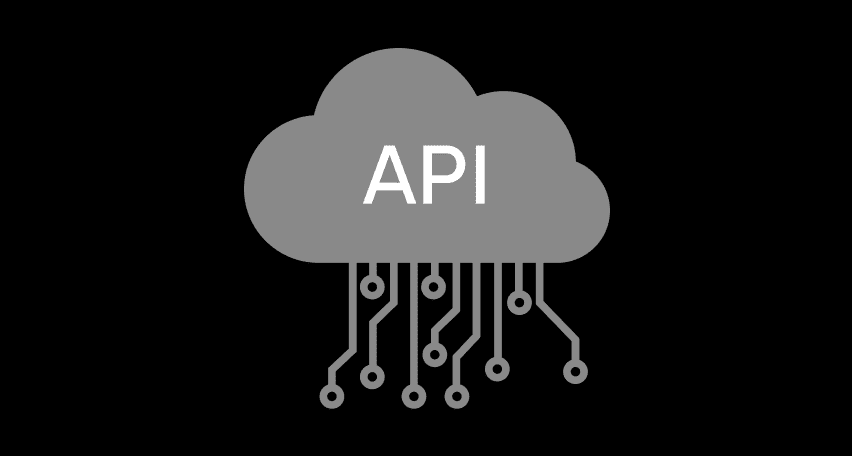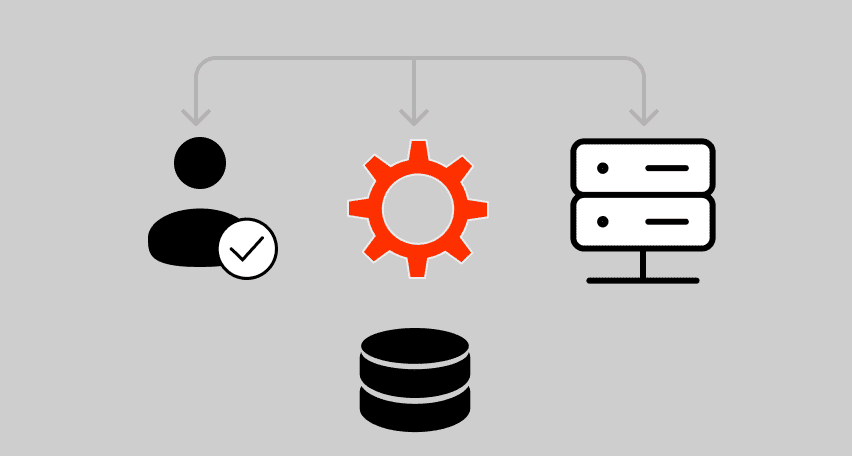Cloud computing has emerged as revolutionary technology in the past decade. Gartner predicts that the waves made by the cloud shift will result in $1 trillion and more in IT spending, making it one of the most disruptive forces in IT expenses.
Unsurprisingly, cloud has always been a favorite platform of web-service providers, owing to its scalability, speed, efficiency, recovery, and management services. Therefore, web services are increasingly shifting to cloud architecture with DevOps and testing following closely.
Although cloud architectures are more scalable than other systems, it’s important to address several challenges to get the maximum benefits. In this article, we will discuss the common challenges and considerations you must face during cloud testing, as well as the main benefits of switching to cloud based testing.
How Is Cloud Testing Different
Cloud architecture allows you to run your applications through a shared data centre. With online resources such as Platform as a service (PAAS), SAAS, Infrastructure as a service (IAAS) and Centralization of data, applications and processing power, testing cloud applications creates unique challenges.
There are mostly three major scenarios for testing cloud based applications:
You need to evolve your testing approach according to all these scenarios. Several factors affect your testing approach from network and application business logic to virtualized infrastructure, data and end-user experience.
In cloud-based application testing, it’s essential to test exceptions mechanisms & business workflow and simulate disaster recovery scenarios and failure scenarios.
The focus of cloud-based software testing should be on validating cloud features such as security, availability, elasticity, interoperability multi-tenancy, and metering in multi-instance cloud environments.
This is why we must test cloud applications as we test web applications. However, it’s also important to include additional test cases, so we can include extensive cloud features that are a part of your application.
Dynamic Scaling
Factors such as dynamic scaling affect how test the application. We must see whether we can scale applications up and down dynamically without losing data or affecting end user connectivity.
Automatic Provisioning
Many applications provision services automatically whenever a new user signs up. In such cases, we would want to test how these processes pan out in the application, and whether the application does the opposite whenever a user leaves the service.
Device Synchronization
For services like iCloud and Dropbox, it’s essential to test device synchronization because users tend to use these applications on different devices. This is especially important in recovery situations, where the sync of data is disrupted and incomplete and you may need to restart it.
8 Important Features of Cloud Testing
Software testing in cloud is carried out differently in various scenarios. You not only have to meet functional requirements, but also make consistent efforts for functional testing, as well. Let us see different types of cloud software testing.
Performance Testing
For cloud applications, performance testing services is one of the most important stages in its development. It gives testers a general overview of the application and helps them understand how various components in the system are performing in a certain situation.
Tester can validate different aspects of the system, including scalability, resource usage, and reliability. Because of this, testers can focus on addressing a number of performance issues in a cloud app using JMeter cloud load testing services.
Security Testing
The level of security in a cloud application is fundamental to its success. Security testing for web applications and mobile apps helps developing teams evaluate the authenticity, integrity, and confidentiality of the mobile and web app.
Therefore, as testers, you must verify that only an authorized customer gets access to data, which they should encrypt otherwise. The application shouldn’t store any data not in use of a customer. At the same time, testers should ensure that administrators on the suppliers end should have no access to the customers’ data. Implementing security settings such as firewall, Anti-virus, VPN, etc is also important.
Functional Testing
Functional testing is centered on the functionality of a cloud application. Therefore, during functional testing, testers need to evaluate whether the core functions of an application are performing optimally. Here they will validate whether an input gives the expected results.
Testing whether the cloud service integrates easily with other applications is also important. This is why testers must if a system displays customer account type properly in different situations after a successful login. Likewise, testers must verify whether a cloud app closes automatically when a user switches to another service.
Compatibility & Interoperability Testing
Compatibility testing is the type of cloud application testing that focuses on the non-functional aspects of the application. As the name suggests, the procedure measures the compatibility of cloud against specific software, network, and hardware requirements.
Cloud applications must be robust enough to work without any problems on different platforms. These applications must work seamlessly when shifting from cloud infrastructure to other systems. Testers must perform a variety of functions to test whether a cloud app performs optimally, some of which are the following:
Load and Stress Testing
Stress testing is a special feature of cloud testing as it tells us how reliably an application can perform. It allows us to measure an application’s performance against extreme workloads, such as high data processing or traffic. The primary objective of this test is to identify the breaking point of the application.
Testers can check for services when multiple users access the cloud services. At the same time, they can identify the defects responsible for environment or hardware failure. Because the amount of load can affect a cloud application significantly, testers also have to see whether the system fails under increasing specific load and how it changes over time under a certain load.
Multi-Tenancy Testing
Multi-tenancy is a common feature in cloud applications. Therefore, testing support for multiple users is essential for cloud testing. Testers must ensure that there is sufficient access control and security for data when multiple users are running a single instance.
Disaster Recovery Testing
Cloud applications have to be extremely reliable. Users rely on cloud applications to give them secure storage for data. Therefore, if failures related to breakdown due to extreme load, network outages, system failures, etc, happens, testers must measure how fast the failure they can detect the failure. They must also see whether the application can prevent data loss during this period.
Availability Testing
Cloud apps need to be available at all times, because most users opt for cloud apps due to their all-round availability. There are multiple mission-critical activities going on, and testers must ensure that these activities don’t impact the application’s availability in any way.
What Are the Challenges of Cloud Testing?
Although cloud applications offer several opportunities for users, starting from scratch can be exceptionally challenging if you don’t adapt to it quickly. However, if you are aware of the associated challenges, you can address your concerns more articulately.
Provisioning and Access
Cloud services often varying licensing and pricing factors that make provisioning complex. Testing flexible configuration for different sets of customers or varying aspects of the product is essential for testing cloud applications.
You can do this with the help of containers and virtualization. However, the challenge comes when testers know but don’t know where to know where to find provisioning rules and how to cooperate with engineers or DevOps for release.
Test Environments Configuration
Persistence is a virtue in almost every case, but makes things a lot complex in testing. It not only defeats the purpose of having a clean test environment, but can also confound tests and throw false positives. Nonetheless, we need test data to improve processes.
One of the main challenges of testing cloud apps is discovering ways to create a test environment that has all essential test data and app configurations. This is something that can waste a lot of time for both developers and testers.
Assurance and Efficiency
The quality of service from cloud service providers also makes testing difficult for users. After all, if you’re testing applications on the cloud, you should ensure that use all resources efficiently, so you can deliver timely and have the proper infrastructure to provide guaranteed uptime and scalable services. These issues can vary depending on how a vendor provides service, so controlling them is hard.
Security Capabilities
Cloud users are often cautious about cloud security. As cyber attacks continue to increase, ensuring data protection has become one of the most important considerations in the cloud. If a user stores sensitive information in a cloud-hosted app, it’s the testers duty to ensure that it doesn’t get compromised.
One white paper on security capabilities in cloud indicated that encryption techniques are insufficient for cloud testing efforts in many cases. However, procedures are constantly being developed to improve security and performance in the cloud.
At the same time, many cloud vendors are not familiar with industry standards. This can result in major problems for cloud apps for healthcare, finance, and other industries with strict compliance rules.
The Importance of Cloud Testing
Cloud testing ensures that your application runs optimally and performs every function well. It helps identify whether the application meets requirements and delivers excellent user experience. Although it’s important for us to improve the quality and velocity of the testing process continuously, cloud testing consistently helps us make cloud apps more effective and reliable.
Businesses benefit from cloud-based testing services from a number of ways. It helps cloud app testers experiment on a system where the hardware is hosted remotely and they only have to test the application terms of software.
Normally, testers have to create their own labs, but cloud testing potentially saves money and development cycles. Similar to cloud apps themselves, you can scale cloud testing platforms up or down based on business demands in hardware and software.
Lastly, cloud-based testing suites assists development and DevOps teams create test environments with flexible configurations and data. At the same time, they can also perform fully automated release processes by using virtualization tools like Docker or Heroku. Using these tools in the cloud makes collaboration easier for the entire product development team.
Cloud Testing at PFLB
Without extensive cloud testing, cloud applications cannot perform optimally. Testing cloud applications is a lot more complex, as testers have to manage different specifications, integrate different infrastructures, improve performance, and test synchronization on multi-platforms.
PFLB is a testing service dedicated to ensuring the best software quality for our clients. We have served over 500 companies across a wide variety of domains that range from finance and healthcare to retail and technology.
With years of experience at our disposal, our testers have learned how to perform cloud application testing optimally for our customers.Our team can test your cloud apps in terms of availability, performance, security, load management, and disaster recovery, helping you outperform your competition. To learn more about the company feel free to visit our website at PFLB.
Learn more
Related insights in blog articles
11 API Failure Causes and How To Solve Them

When an API fails, the consequences ripple quickly through the entire system. Transactions stall, integrations break, and frustrated users flood your support channels. Understanding exactly why API failures happen — and how to fix them — is essential for developers and businesses alike. This article examines the most common reasons behind API failures, explores the […]
API Mocking: A Complete Guide

Waiting for APIs to become available or stable can slow down entire projects. API mocking provides a smart way to avoid these roadblocks by simulating real API responses, keeping your teams productive and ensuring smoother integration down the line. In this guide, you’ll discover exactly what API mocking involves, how it differs from using real […]
API Endpoint: A Complete Guide

Modern applications rely heavily on APIs (Application Programming Interfaces) to communicate and exchange data across different systems. At the heart of this interaction lies the API endpoint — a fundamental concept that defines where and how data exchanges happen. This guide explains clearly what an API endpoint is, outlines its importance, and provides practical insights […]
gRPC vs. REST: Detailed Comparison

Choosing between gRPC and REST can feel confusing, especially if you’re trying to figure out the best way for your applications to communicate. This article breaks down the grpc vs rest comparison clearly, without jargon or confusion. You’ll learn exactly what each protocol is, the advantages and disadvantages of each, and understand why gRPC is […]
Be the first one to know
We’ll send you a monthly e-mail with all the useful insights that we will have found and analyzed
People love to read
Explore the most popular articles we’ve written so far
- Top 10 Online Load Testing Tools for 2025 May 19, 2025
- Cloud-based Testing: Key Benefits, Features & Types Dec 5, 2024
- Benefits of Performance Testing for Businesses Sep 4, 2024
- Android vs iOS App Performance Testing: What’s the Difference? Dec 9, 2022
- How to Save Money on Performance Testing? Dec 5, 2022